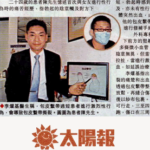
What is foreskin or prepuce?
The male reproductive system includes: testicles, epididymis, scrotum, vas deferens, seminal vesicles, prostate, penis, etc.
Foreskin (or Prepuce)
The foreskin (prepuce) is a double layer of skin covering the head (glans) of the penis. The foreskin grows with the penis during the embryonic period and has the function of protecting the head of the penis and preventing external injury and collision.
Almost all newborn babies' foreskins cannot be opened wide. By about three years old, approximately 50% of foreskins can be pulled backward to expose the head of the penis. During puberty (around 12-13 years old), more than 90% of boys can pull the foreskin backward to expose the head of the penis. Over 95% of adults can pull the foreskin backward to expose the head of the penis.
In normal adults, the foreskin does not completely adhere to the head of the penis. It covers the head of the penis during resting status. The foreskin can easily and painlessly retract to the shaft of the penis and can automatically expose the entire head of the penis during an erection. In some normal adults, the penis length growth exceeds the foreskin growth, and the foreskin naturally retreats to the shaft of the penis, so that the entire head of the penis is exposed during resting or erection state.
Long Prepuce
Long prepuce means that the foreskin covers the head of the penis and urethral opening during erection.
Adverse Effects of Long Prepuce
Long prepuce may affect patients in several ways:
- Uncontrollable urine stream or bifurcation: Long prepuce may lead to an uncontrollable urine stream or urine stream bifurcation, resulting in urine wetting the patient's body, clothing, or the surrounding environment.
- Hygiene issues: Patients with long prepuce often do not retract and clean their foreskin and the head of the penis. This can lead to the accumulation of urine and dirt (smegma) between the head of the penis and the prepuce, resulting in bacteria overgrowth, unpleasant odors, balanitis, posthitis, or even urinary tract infections.
- Sexual health risks: Through sexual intercourse, the bacteria inside the foreskin can be passed to patients' sexual partners, causing vaginitis, pelvic inflammatory disease, or urinary tract infections. Conversely, bacteria from female sexual partners can be passed to patients with long prepuce, causing unpleasant odors, balanitis, posthitis, or even urinary tract infections.
- Condom issues: Patients with long prepuce often experience easy slippage of condoms or difficulty in wearing them properly.
- Ejaculation and fertility: Long prepuce may affect ejaculation, as the ejaculated semen can become trapped between the prepuce and the head of the penis, potentially impacting fertility.
- Sensitivity and premature ejaculation: The head of the penis in patients with long foreskin is usually more sensitive or even hypersensitive compared to those with a normal foreskin. Once exposed, the hypersensitive head of the penis may result in premature ejaculation. After circumcision, the head of the penis becomes completely exposed, and the skin of the head thickens over time, leading to reduced sensitivity. Some patients have reported an improvement in premature ejaculation following circumcision.
















